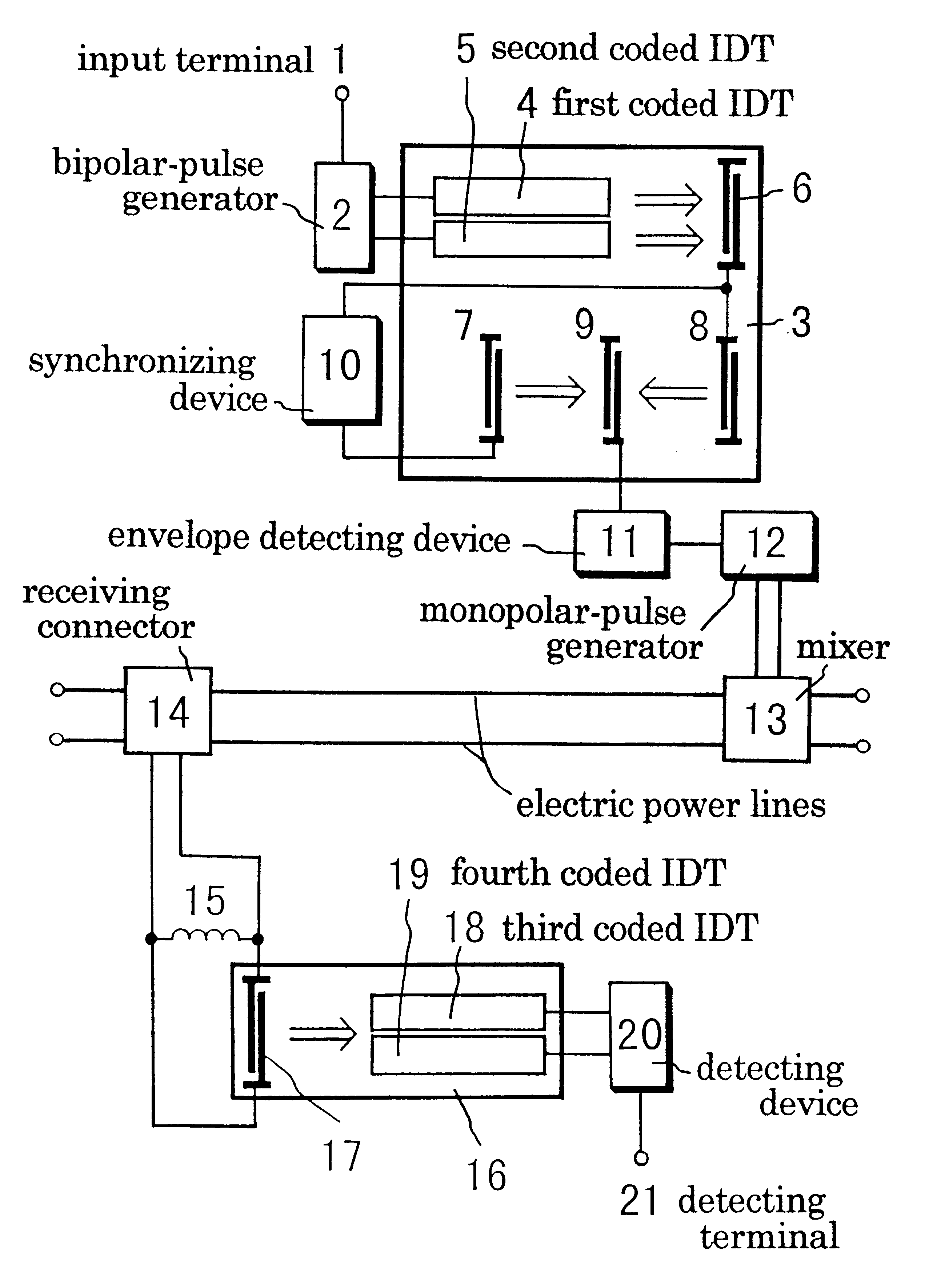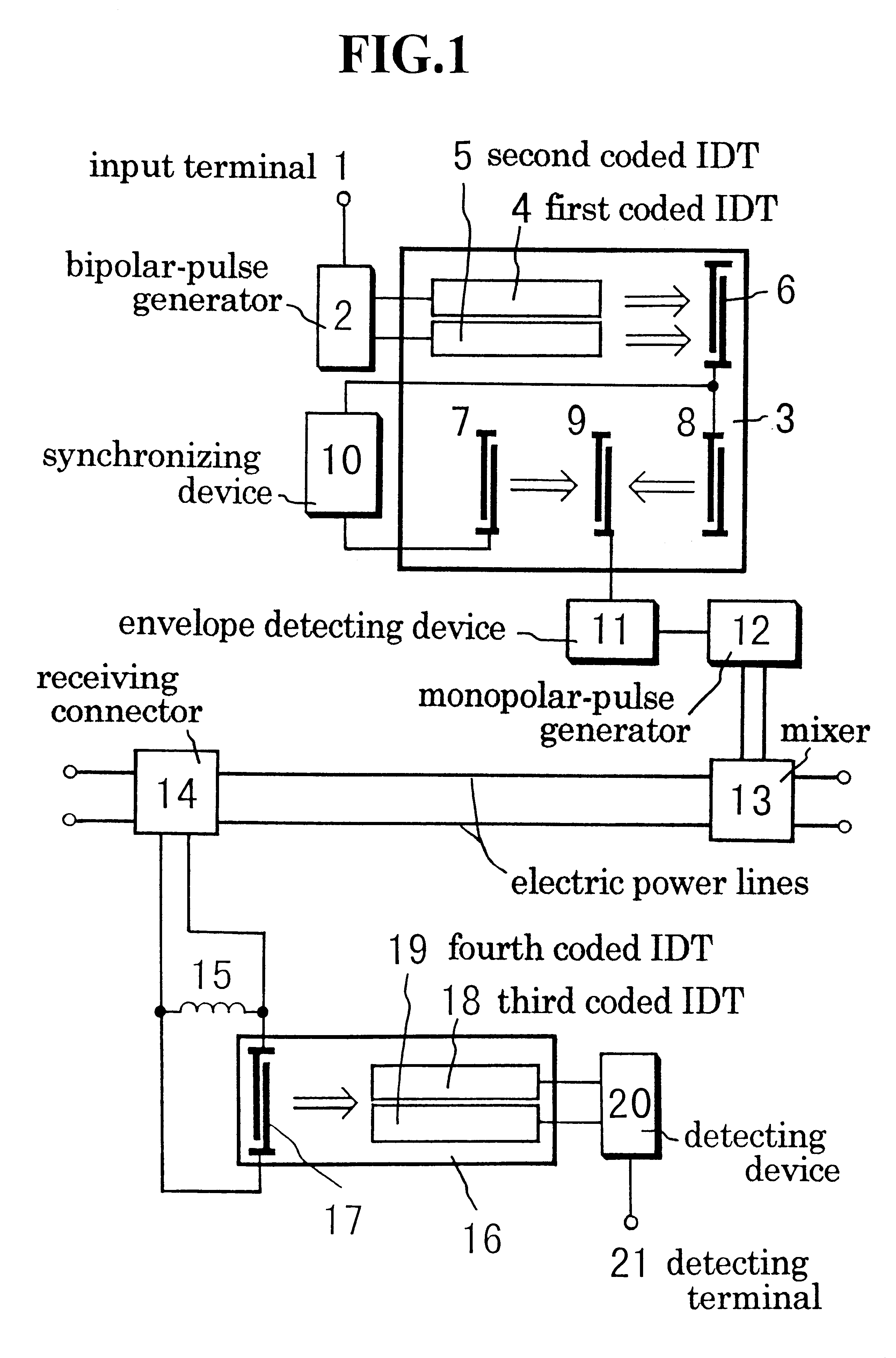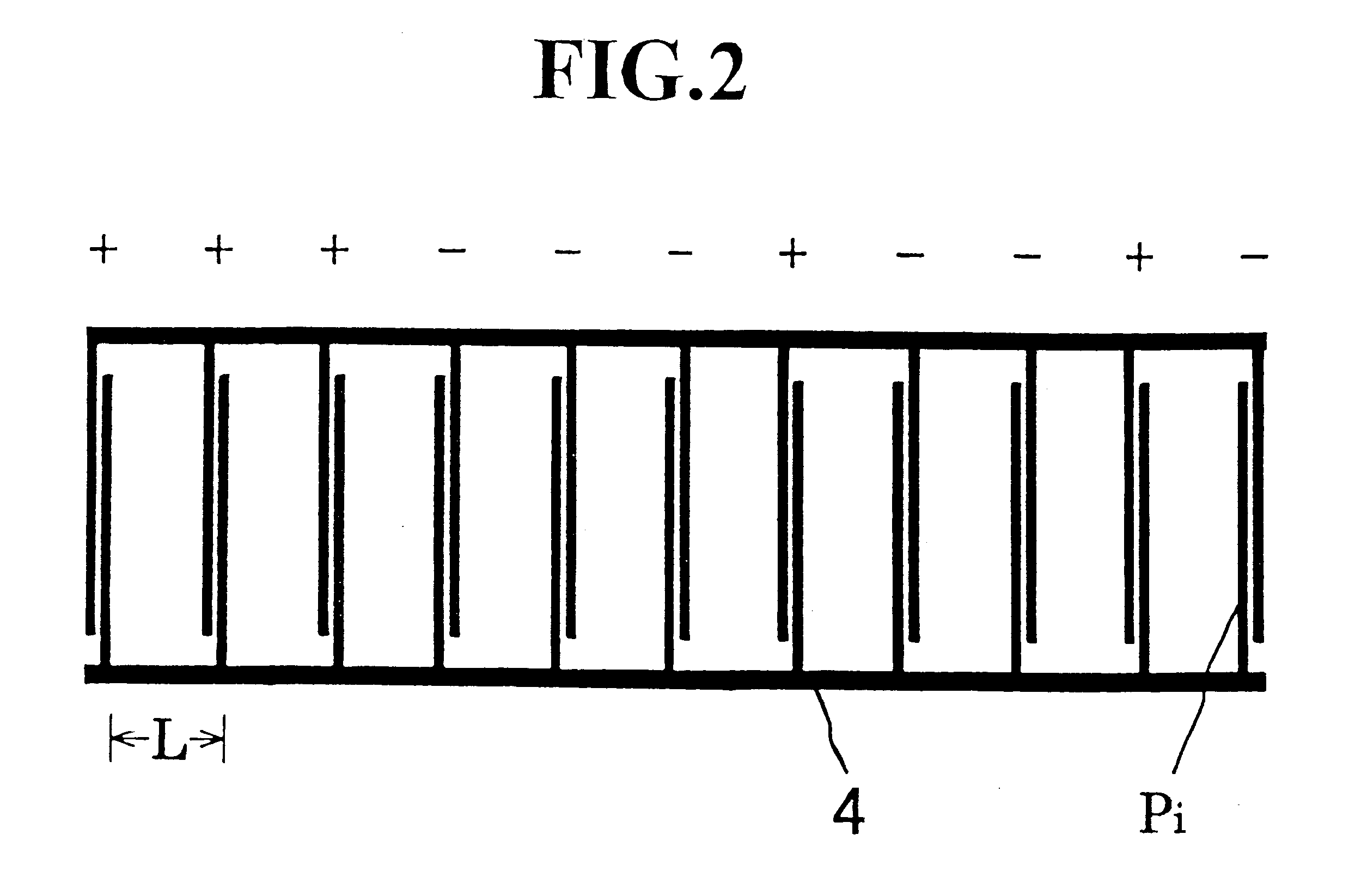Transmitting and receiving system for digital communication on electric power-lines
a technology of digital network communication and transmission system, which is applied in the direction of electric controllers, instruments, ignition automatic control, etc., can solve the problems of unavoidable use of complicated circuits and difficult conventional cdma methods
- Summary
- Abstract
- Description
- Claims
- Application Information
AI Technical Summary
Benefits of technology
Problems solved by technology
Method used
Image
Examples
Embodiment Construction
FIG. 1 shows a schematic illustration of a transmitting and receiving system for digital communication on electric power-lines according to an embodiment of the present invention. The transmitting and receiving system for digital communication on electric power-lines comprises transmitting-and receiving devices. The transmitting device comprises input terminal 1, bipolar-pulse generator 2, first piezoelectric substrate 3, first coded IDT 4, second coded IDT 5, first intermediary IDT 6, sideward IDT 7, sideward IDT 8, central IDT 9, synchronizing device 10, envelope detecting device 11, monopolar-pulse generator 12, and mixer 13 connected with electric power-lines. Sideward IDT 7, sideward IDT 8, and central IDT 9 form an electrode group. Synchronizing device 10 is connected between first intermediary IDT 6 and sideward IDT 7. Envelope detecting device 11 is connected with central IDT 9. The receiving device comprises receiving connector 14 connected with the electric power-lines, tu...
PUM
 Login to View More
Login to View More Abstract
Description
Claims
Application Information
 Login to View More
Login to View More - R&D
- Intellectual Property
- Life Sciences
- Materials
- Tech Scout
- Unparalleled Data Quality
- Higher Quality Content
- 60% Fewer Hallucinations
Browse by: Latest US Patents, China's latest patents, Technical Efficacy Thesaurus, Application Domain, Technology Topic, Popular Technical Reports.
© 2025 PatSnap. All rights reserved.Legal|Privacy policy|Modern Slavery Act Transparency Statement|Sitemap|About US| Contact US: help@patsnap.com



